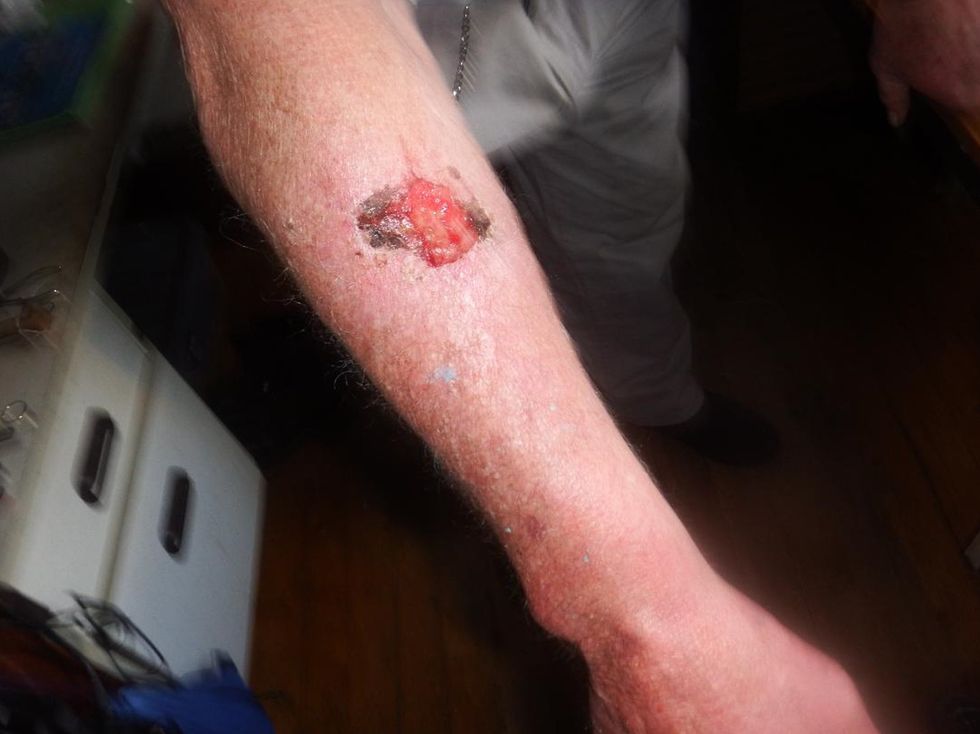Giant hogweed: Pensioner still in pain 50 years after exposure to 'Britain's most dangerous plant' as old wound breaks into gruesome sore


Giant hogweed sap stops the skin from protecting itself against the sun, leading to gruesome burns when exposed to daylight
Don't Miss
Most Read
A pensioner who was exposed to “Britain’s most dangerous plant” over 50 years ago is still suffering from health complications after his old wound broke out into a painful sore.
George Parsonage, 80, first encountered the dreaded giant hogweed in the 1960s, while working on Glasgow’s waterways.
Though the initial lesion was small, it remained sensitive to sunlight for decades, so he was given a spray to treat the injury.
However, “all hell broke loose” when the old wound flared up and left his arm with an open sore.

A pensioner who was exposed to “Britain’s most dangerous plant” over 50 years ago has developed a massive sore
|Penn News/Flickr
He said: “The giant hogweed burn wasn't that bad with me, it was what came after it.
“It used to be slightly affected by sunlight, but it was no bigger than a centimetre square.
“They sent me a spray and it started to go away, but then all hell broke loose. And I was told to stop the spray immediately.”
Giant hogweed sap stops the skin from protecting itself against the sun, leading to gruesome burns when exposed to daylight. It often causes no immediate pain, leading its victims to spend time in the sun unaware of any problem.
The affected area can remain sensitive to sunlight long term.
LATEST DEVELOPMENTS:

His wound is breaking out in a gruesome sore more than 50 years later
|Penn News
The plant’s seeds are often dispersed by water, so it is usually found blooming along rivers and streams - exactly where Parsonage’s line of work would take him.
He said that despite being small in size, it has now grown into a large sore. He said: “There is no doubt it's getting worse, but to get anything done with it would mean me going into a hospital, getting a skin graft and things.
“At my age, and state of health, it is not worth it.”
Now Parsonage, a retired lifeboat officer, is speaking out to warn others about the scourge of giant hogweed.

Parsonage is now warning others about the dangers of giant hogweed
| WikimediaCommonsHe advised others to first, stay clear of it, and second, report it when you do see it.
“I would blame you if you did not report it and some children who walk along the same path as you get burned with it.
“It's a dangerous plant and the council should get rid of it, but they can only get rid of it if people report it.”
The giant hogweed is native to the Caucasus, but was introduced to Britain as an ornamental plant in 1817.
It was called “without a shadow of a doubt, the most dangerous plant in Britain” by Mike Duddy, of the Mersey Basin Rivers Trust in 2015.










